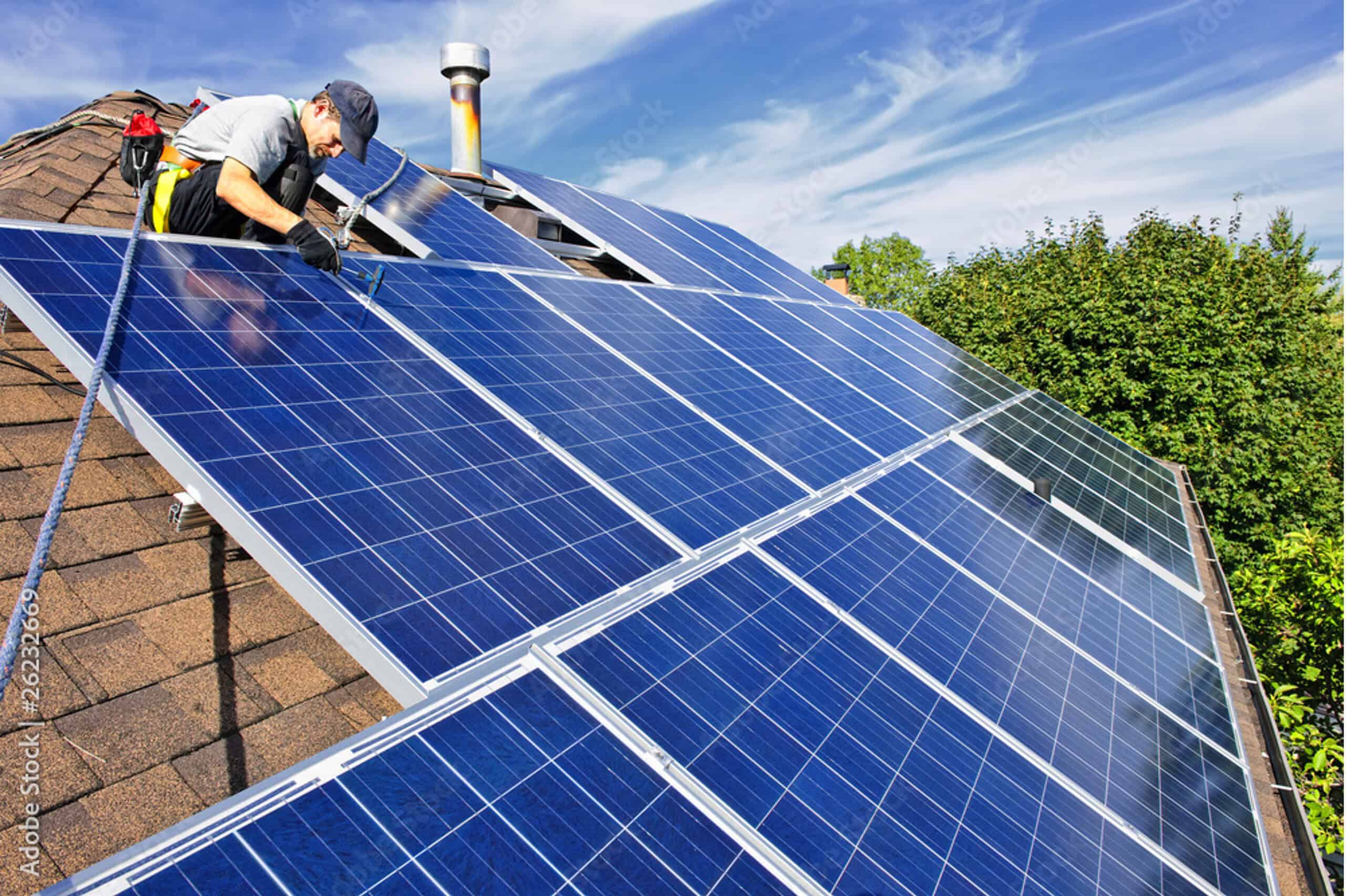Did you know there is evidence that suggests the Ancient Egyptians may have used solar power to their benefit almost 5,000 years ago?
They obviously didn’t stick solar panels on top of their homes like people do today. But it seems like they may have understood solar power on a very rudimentary level.

It would take thousands of years for people to get to the bottom of using solar power as a renewable resource, though. In more recent times, the history of solar energy only dates back about 200 years.
Want to learn when solar power was invented, who invented it, and why? We’re going to take a closer look at the solar timeline over the last 200 years to show you how it was first founded and how it has developed over time.
Here is just about everything you need to know about this form of green energy and its evolution.
The Discovery of the Photovoltaic Effect
Many people point to 1839 as the year when solar power was invented. That was the year when a French physicist named Edmond Becquerel discovered the photovoltaic effect.
And what is the photovoltaic effect? Well, it’s basically a process that involves using light or radiant energy to produce an electrical current. The discovery of the photovoltaic effect laid down the foundation for the introduction of several solar-powered devices during the second half of the 1800s.
In the 1860s, for example, French mathematician Augustin Mouchot took what Becquerel was able to find out about the photovoltaic effect and used it to create solar-powered engines. Several inventors in the U.S. would then follow Mouchot’s lead and create their own solar-powered inventions in the 1880s and 1890s.
The First Solar Cell
While many other inventors were preoccupied with trying to put together plans for the first solar-powered devices, New York inventor Charles Fritts took a slightly different approach to the newfound interest in solar power in the 1880s. In 1883, he created the very first solar cell by taking selenium and coating it with gold.
This solar cell is now considered to be a very primitive version of what solar cells would eventually become. It was only able to generate an energy conversion rate of 1 or 2%, which is nothing when you consider that today’s solar cells have an energy conversion rate of 15 to 20%.
But the work that Fritts did while developing the first solar cell laid the groundwork for what was to come. He’s credited with helping to usher in the solar power era in the U.S., and he inspired more than a few researchers to start working on improving upon his initial solar cell design.
The First Patents for Solar Cells
American inventor Edward Weston was one of the first researchers to build upon what Charles Fritts had created when he came up with the first solar cell. Just 5 years after Fritts introduced his solar cell to the world, Weston was able to secure not one, but two patents for solar cells.
Both of the cells Weston patented were designed to take radiant energy that stemmed from the sun and turn it into electrical energy. Weston exposed these solar cells to light, and this light was able to cause electrons in the solar cell to be released, which is how they produced an electrical current.
At around the same time as Weston was making this discovery, Russian scientist Aleksandr Stoletov created a solar cell that relied on the photoelectric effect. His findings would lead to American inventory Melvin Severy receiving U.S. patents for devices that contained solar cells that generated electricity through the use of the photoelectric effect in 1894.
The First Thermal Batteries
At the tail end of the 1800s, American inventor Harry Reagan received a patent for the thermal batteries he was able to produce. This was noteworthy because these batteries were capable of storing heat that could be used to produce electricity.
These thermal batteries would have to be developed further down the line. But they would later help scientists come up with ways to collect, store, and distribute solar energy.
The First Silicon Solar Cells
Between the late 1800s and the 1950s, there wasn’t much progress made when it came to solar power. But that all changed in the 1950s. Bell Laboratories inventors Daryl Chapin, Calvin Fuller, and Gerald Pearson created the first silicon solar cells.
They found that a silicon solar cell was more efficient than a solar cell that relied on selenium. They also found that a silicon solar cell was capable of taking solar energy and converting it to electricity that could be used in a tangible way.
However, silicon solar cells were very expensive to make and use so they didn’t catch on much at the time. The University of Delaware did build one of the very first solar buildings ever in 1973. But it wasn’t cheap so it didn’t inspire many others to follow its lead.
The First U.S. Commitment to Solar Energy
By chance, the U.S. would go through an energy crisis in the 1970s, and this would really propel solar energy forward. Congress would pass the Solar Energy Research, Development, and Demonstration Act of 1974. It showed the country’s commitment to solar power.
This would lead to some Americans starting to stick solar panels onto their roofs. But as the energy crisis came to a close, the demand for solar power started to die down in the 1980s.
To its credit, though, the U.S. government continued to research solar power and develop new solar technologies. This led to solar costs plunging in the early 2000s and right up until the modern day.
Today, you can have a solar company install solar panels for you for a very affordable price. It’s why you should look into getting more solar energy information soon.
Knowing When Solar Power Was Invented Is Important
It’s very important for people to know that solar power didn’t just come out of nowhere. It’s been under development for decades now.
Knowing when solar power was invented should give you a new appreciation for it. It should also make you feel more comfortable about embracing solar energy.
Read more informative articles on solar energy on the rest of our blog.

